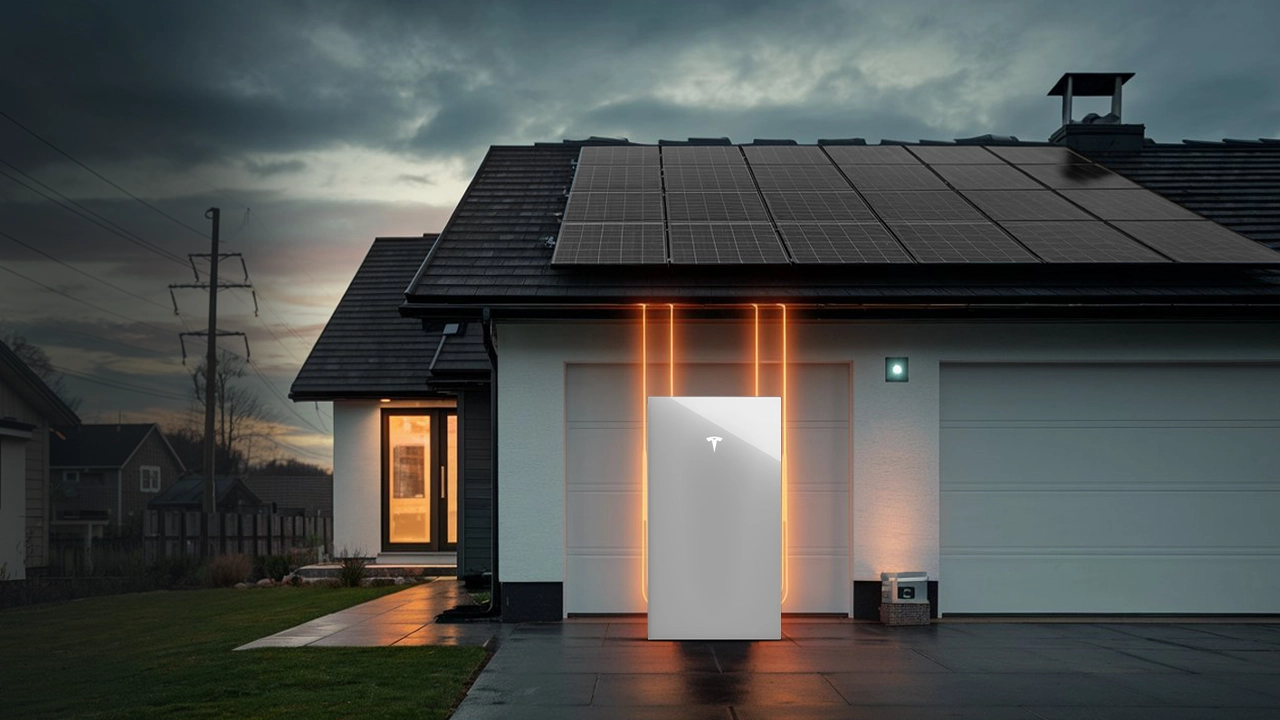- Updated On: February 14, 2025
Home Battery Buyer Guide:
Tips to Choose the Right Solar Backup Solution
Are you confused about choosing the best backup solution for your home? A solar battery is a key element of a residential PV system if you want to maximize grid independence and reap all the benefits of your home solar. With increasing energy costs, frequent power outages, and extreme weather conditions, if you have the right solar backup battery, you can reduce your dependency on your utility, enable solar energy usage at night, avoid peak prices under time-of-use rates and provide a reliable power source during outages. However, in a competitive market, it is quite challenging to decide the best solar battery according to your energy needs.
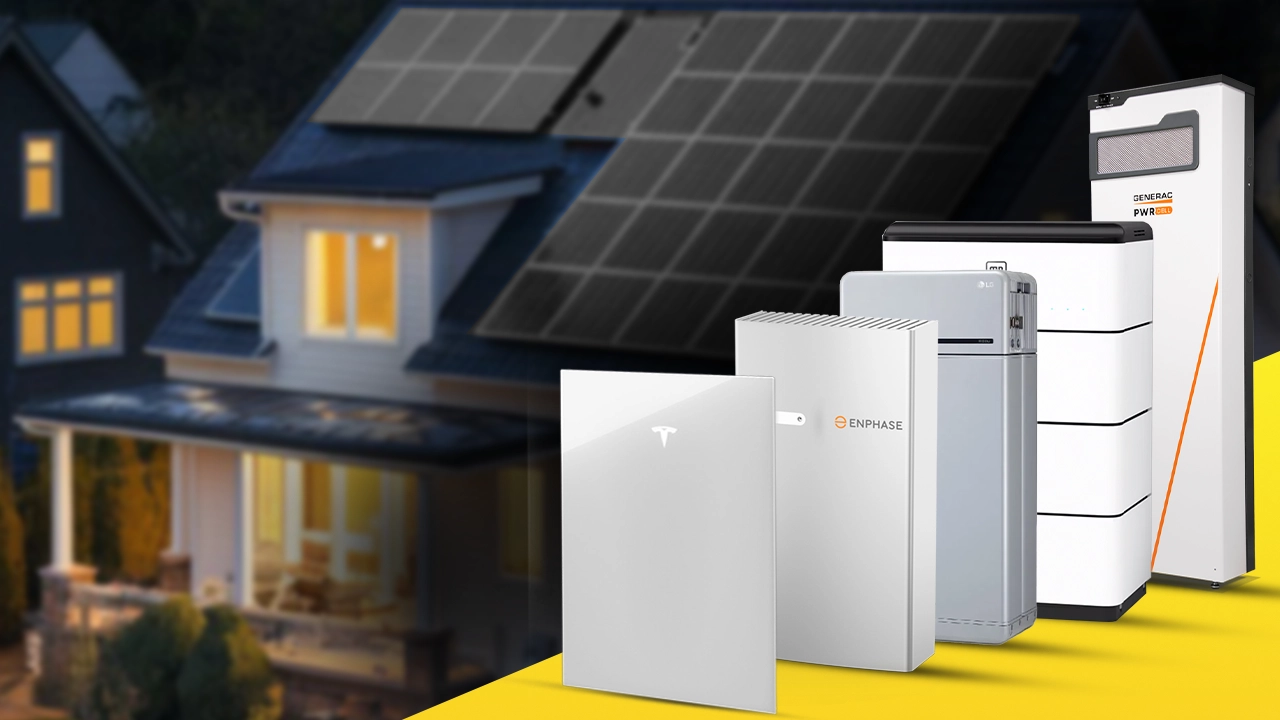
How does a home solar battery work?
Solar batteries are essential for fostering energy independence because they store excess power produced by photovoltaic (PV) solar panels. If you have a backup battery installed, your home will remain powered by this stored energy when electricity production is less, such as at night or in cloudy weather. Here is how it works in two different scenarios:
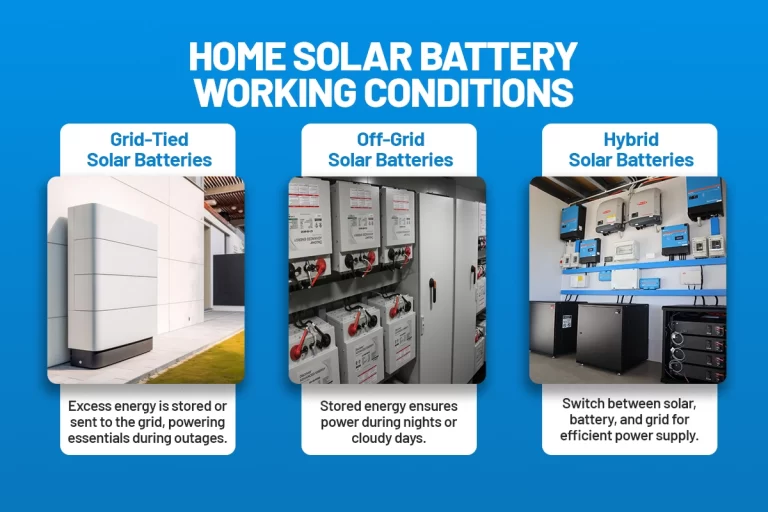
1- Grid-Tied Solar Batteries:
When your solar panels generate more electricity than your home needs, the excess energy can be transmitted to the power grid or stored in a solar battery. Additionally, if you have a smart home system like SPAN Panel, you can control and prioritize your electric essentials. Backup batteries can help run appliances, EV chargers, and other devices at night, during power outages, or when grid electricity rates are at their highest.
2- Off-Grid Solar Batteries:
Backup batteries are vital for the off-grid solar energy system to store the electricity generated by solar panels. This stored energy ensures continuous power supply when solar panels do not produce energy, like at night or on cloudy days.
3- Off-Grid Solar Batteries:
A hybrid solar system having a solar inverter can cut you off from the grid for some time. With this, you may utilize the energy stored in your battery to power your home or send it back to the grid to save money through rate arbitrage (assuming you have time-of-use rates). You can also charge your battery using your solar panels or the grid. In a power outage, a hybrid system can also keep your home powered.
What are the different types of solar batteries available in the market?
Let’s have a quick overview of home battery options available in the market:
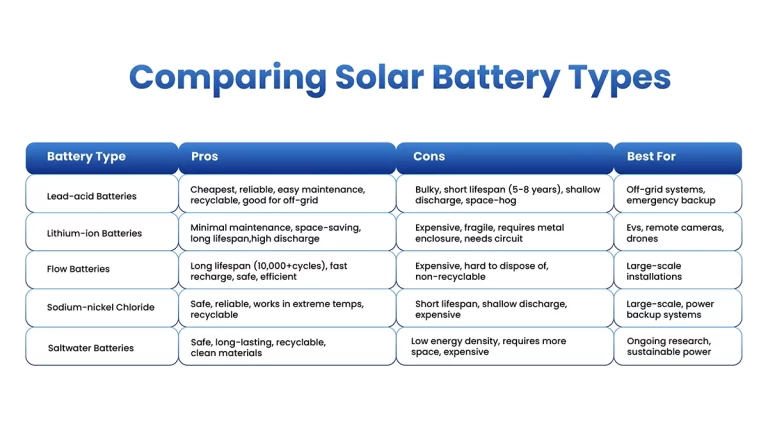
Lead-Acid:
Lead-acid batteries are the industry standard for electrical energy storage. The cost-effectiveness of lead-acid batteries is its most prominent advantage. As it is less expensive than to pay for a power mains grid extension, they are often used in rural and remote areas. Lead-acid batteries have a long-term, consistent output because they are deep-cycle batteries. There are two types of these batteries: sealed and flooded. When installing an off-grid solar system, lead-acid batteries are the first option as they are reliable and easy to repair. They are still used in emergency power backup systems across the US.
Lithium-Ion:
The latest lithium technology comes with a reduced risk of fire. Although they are costly and temperature-sensitive, they are still the most popular backup battery in the market. Li-Ion batteries need little to no maintenance and their energy density is higher. This indicates that if we compare lithium-ion vs lead acid batteries of the same physical size, Li-Ion has more storage capacity. Also, they have deeper depths of discharge and longer lifespans due to their extended life cycles. At an 80% depth of discharge, the lithium-ion battery may provide 4,000–6,000 cycles and still last up to 15 years. The automobile sector is now using lithium-ion batteries. As electric vehicle makers compete for this battery, demand is at an all-time high.
Flow Batteries:
Since flow batteries (also known as redox flow batteries) are primarily made for commercial applications, they are less often used in home systems. They work best when they endure several cycles of charging and discharging each day.
Nickel-Cadmium Backup Storage:
Compared to lead-acid batteries, nickel-cadmium batteries have twice the energy density. Because of its high cost, high durability, and ability to withstand high temperatures, nickel-cadmium batteries are a desirable option for use in business and industry. Cadmium is usually not suitable for use in homes because it is poisonous.

What are the useful tips for choosing the right solar battery solution?
The home battery specifications vary between the different battery brands in the market which may confuse a homeowner. To be sold in the U.S., each battery must meet certain quality and safety standards. To help you out, we have mentioned below some key elements to consider when you compare different battery brands & quotes.
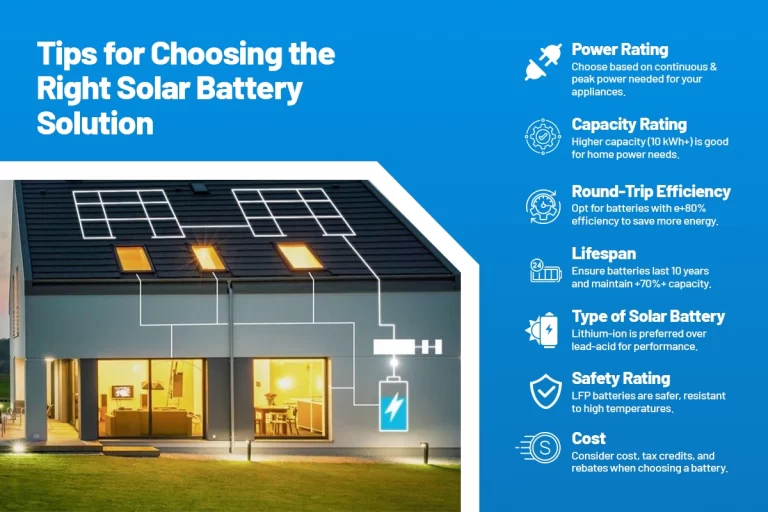
Power Rating
A battery’s power rating is the kilowatts (kW) of electricity a battery can deliver at once. The power rating depicts the number of appliances that the battery can bear at a time. Solar batteries often come in two different power ratings: Continuous Power Rating depicts the amount of energy the battery can provide to appliances that need constant power like refrigerators. On the other hand, Peak Power Rating is the maximum energy a battery can deliver in a short time to keep running your electronic appliances. Most solar batteries have a 5kW continuous power rating & a 7kW peak power rating. So, if you want to power up more appliances, you should consider a home storage battery with a high-power rating.

Capacity Rating
The capacity of a solar battery reflects the amount of energy it can store and provide to your home. Kilowatt-hours (kWh) is the measure of the storage capacity of a solar battery system. Like power rating, the capacity rating also has two types. One is the total capacity, and the other is the usable capacity. Battery storage with a capacity rating of at least 10 kWh is sufficient for most home’s power needs.

Round-Trip Efficiency
It shows how much energy you can get out of your solar battery versus how much energy you actually store. For example, your solar panels supply 10 kWh of power to your solar battery, but the stored energy is 7 kWh. The remaining 3kWh is used by the operating system. And the battery round-trip efficiency will be 70%.

Lifespan
There are three elements to measure the lifetime of a battery: Expected Operating Years, Estimated Throughput, and Expected Cycles. The cycle reflects the number of times a battery can be fully charged and drained. The throughput is the expected energy the battery will release over time. It varies and depends upon the battery’s starting capacity.

Type of Solar Battery
It indicates the different chemicals & compositions used to make the home storage. Although lead-acid batteries were the most popular choice for solar-plus-storage systems, now lithium-ion batteries are the preferred option based on their performance.

Safety Rating
For installation in homes, all batteries have to meet strict safety standards. Some battery chemistries, on the other hand, are slightly safer than others like NMC storage is more temperature-sensitive than LFP batteries.

Cost
The cost of a solar battery varies depending on your energy needs and the brand you choose. But, the happy news is that batteries that work with solar power systems are eligible for the 30% federal solar tax credit. Moreover, states also offer additional storage rebates to help homeowners cut down the installation costs.

What s the life expectancy of a solar battery?
The life expectancy of a battery is dependent on various aspects.
- Type of solar battery backup
- The amount of sunlight a solar battery store
- How do you take care of a solar battery
- Connection with type of solar panel
- Usage frequency
Remember that selecting the best solar battery is about finding a solution that fits your specific energy needs, not just about the most powerful or the cheapest option. So, we recommend you to consult a trusted solar installer like Solar SME about the best option for your home solar system and energy needs. You can also get a FREE ESTIMATE of your savings with a battery backup solution with our smart solar calculator.
Related Articles:
2025 is a game changer for solar energy as the U.S. accelerates its transition toward a sustainable future. Because of skyrocketing energy bills, persistent inflation, and increasingly frequent long power outages.
With the increasing demand for solar energy systems, the need for an efficient battery energy storage solution has become important for homeowners.
With frequent long power outages in the United States due to bad weather conditions and grid failures, homeowners are now seeking solutions to protect themselves and reduce their reliance on the power grid.



